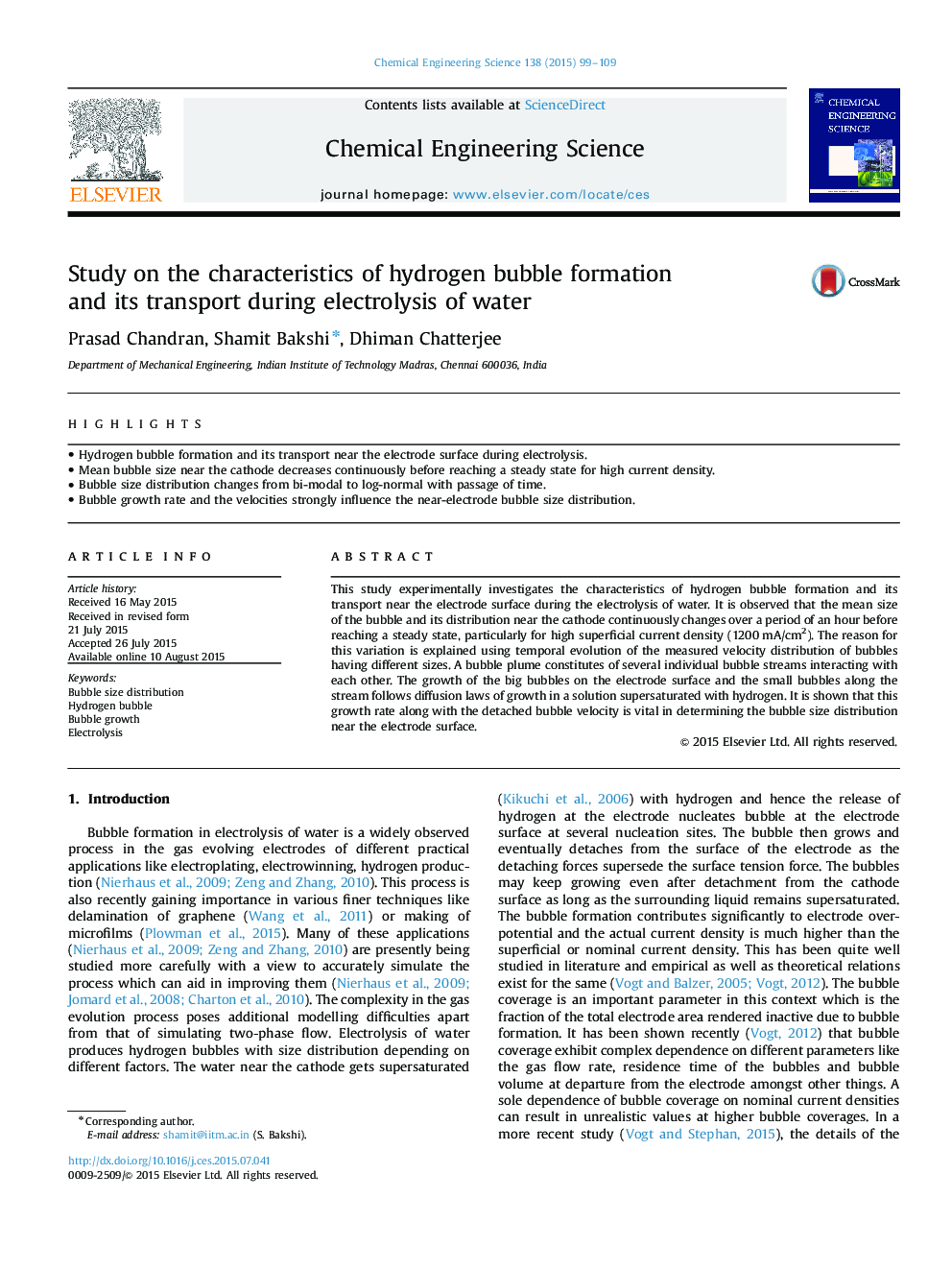| Article ID | Journal | Published Year | Pages | File Type |
|---|---|---|---|---|
| 154586 | Chemical Engineering Science | 2015 | 11 Pages |
•Hydrogen bubble formation and its transport near the electrode surface during electrolysis.•Mean bubble size near the cathode decreases continuously before reaching a steady state for high current density.•Bubble size distribution changes from bi-modal to log-normal with passage of time.•Bubble growth rate and the velocities strongly influence the near-electrode bubble size distribution.
This study experimentally investigates the characteristics of hydrogen bubble formation and its transport near the electrode surface during the electrolysis of water. It is observed that the mean size of the bubble and its distribution near the cathode continuously changes over a period of an hour before reaching a steady state, particularly for high superficial current density (1200 mA/cm2). The reason for this variation is explained using temporal evolution of the measured velocity distribution of bubbles having different sizes. A bubble plume constitutes of several individual bubble streams interacting with each other. The growth of the big bubbles on the electrode surface and the small bubbles along the stream follows diffusion laws of growth in a solution supersaturated with hydrogen. It is shown that this growth rate along with the detached bubble velocity is vital in determining the bubble size distribution near the electrode surface.
